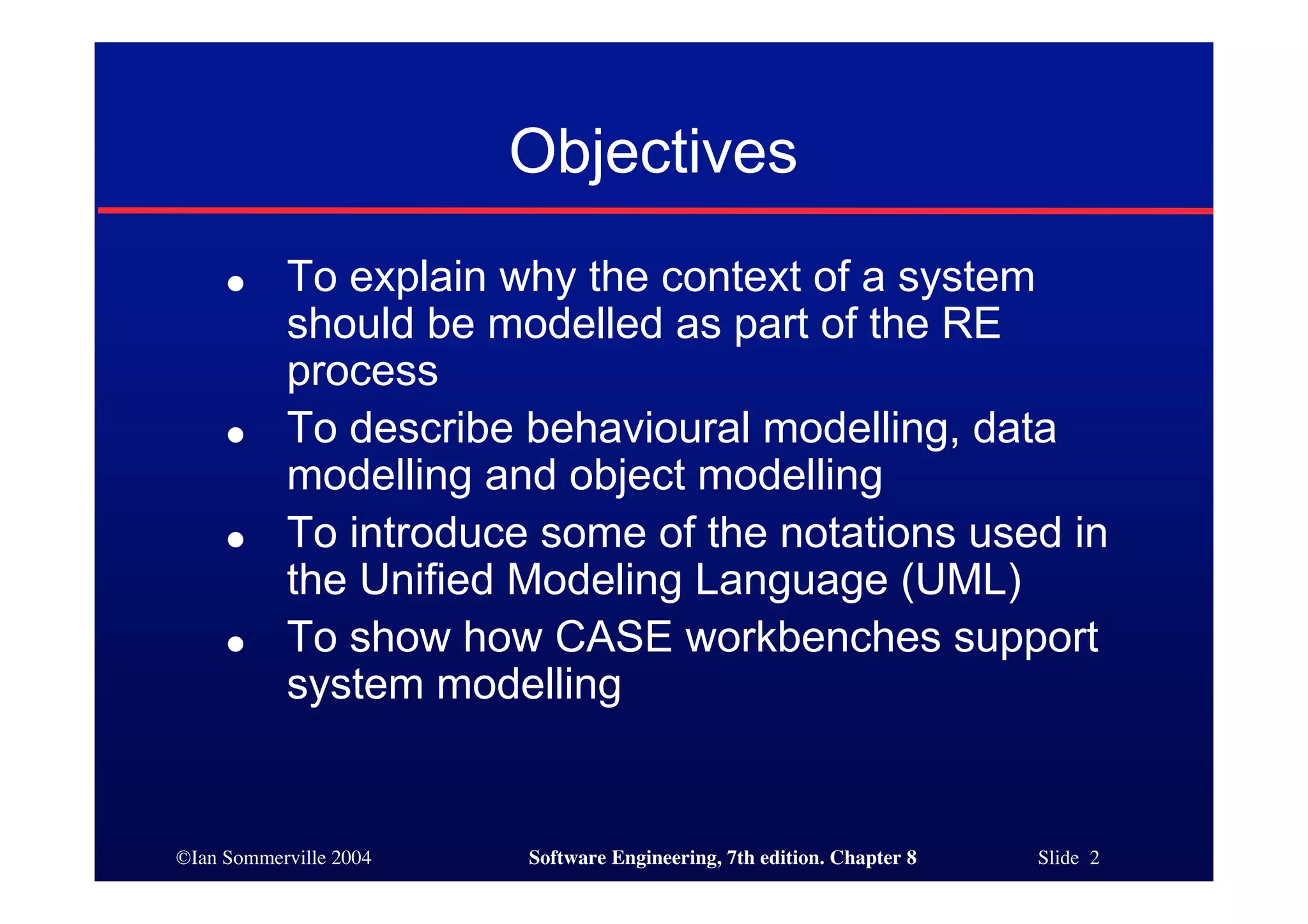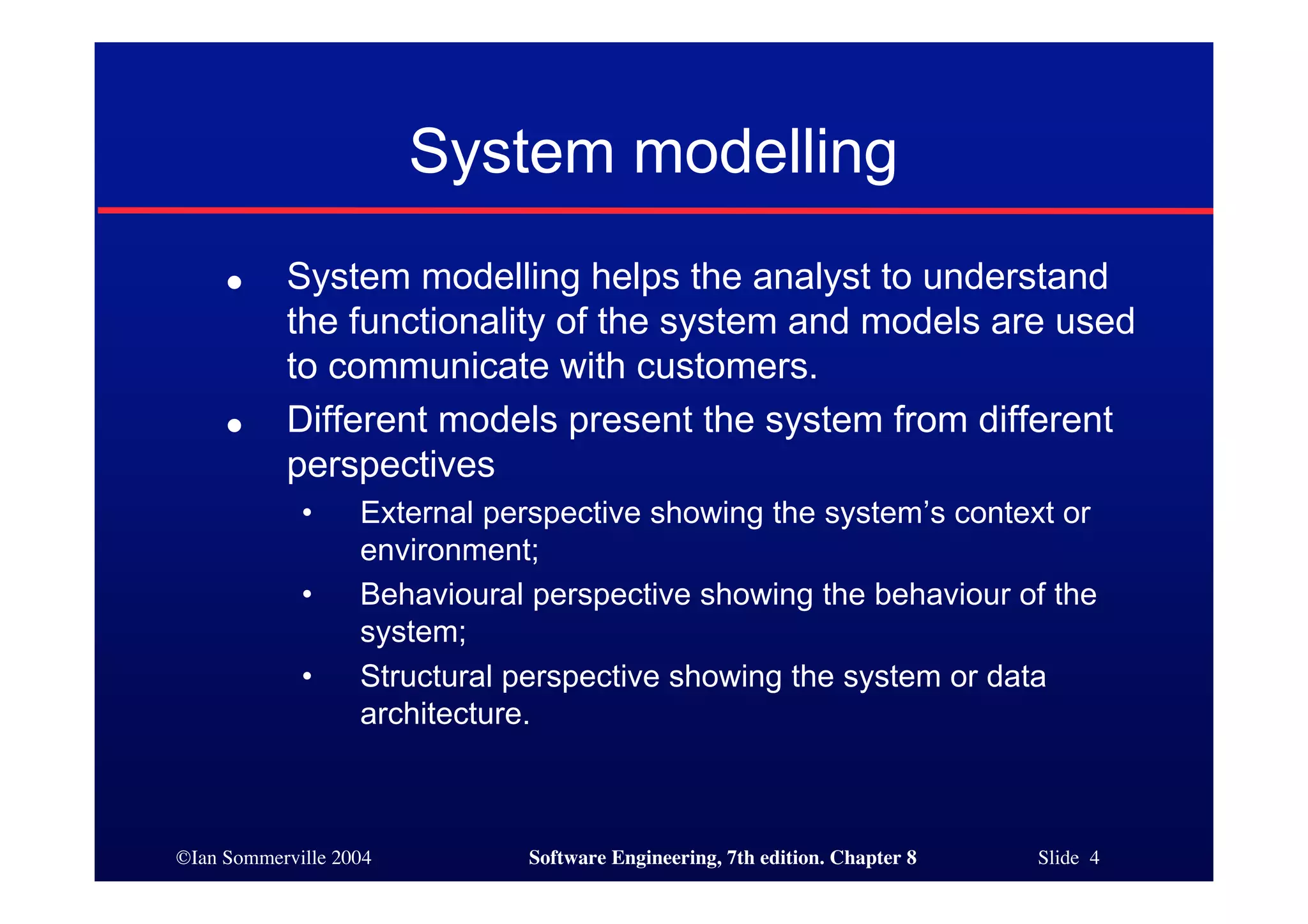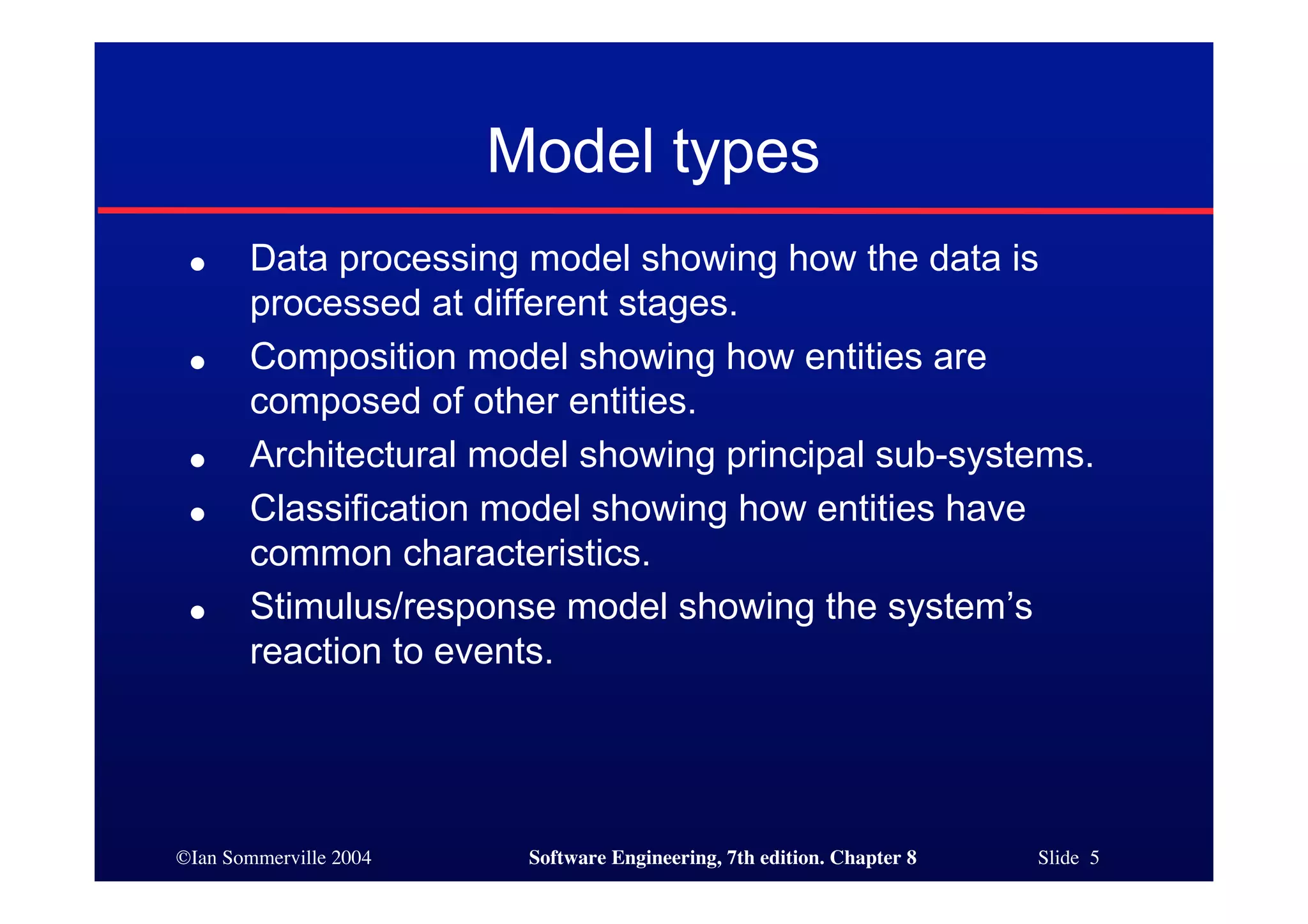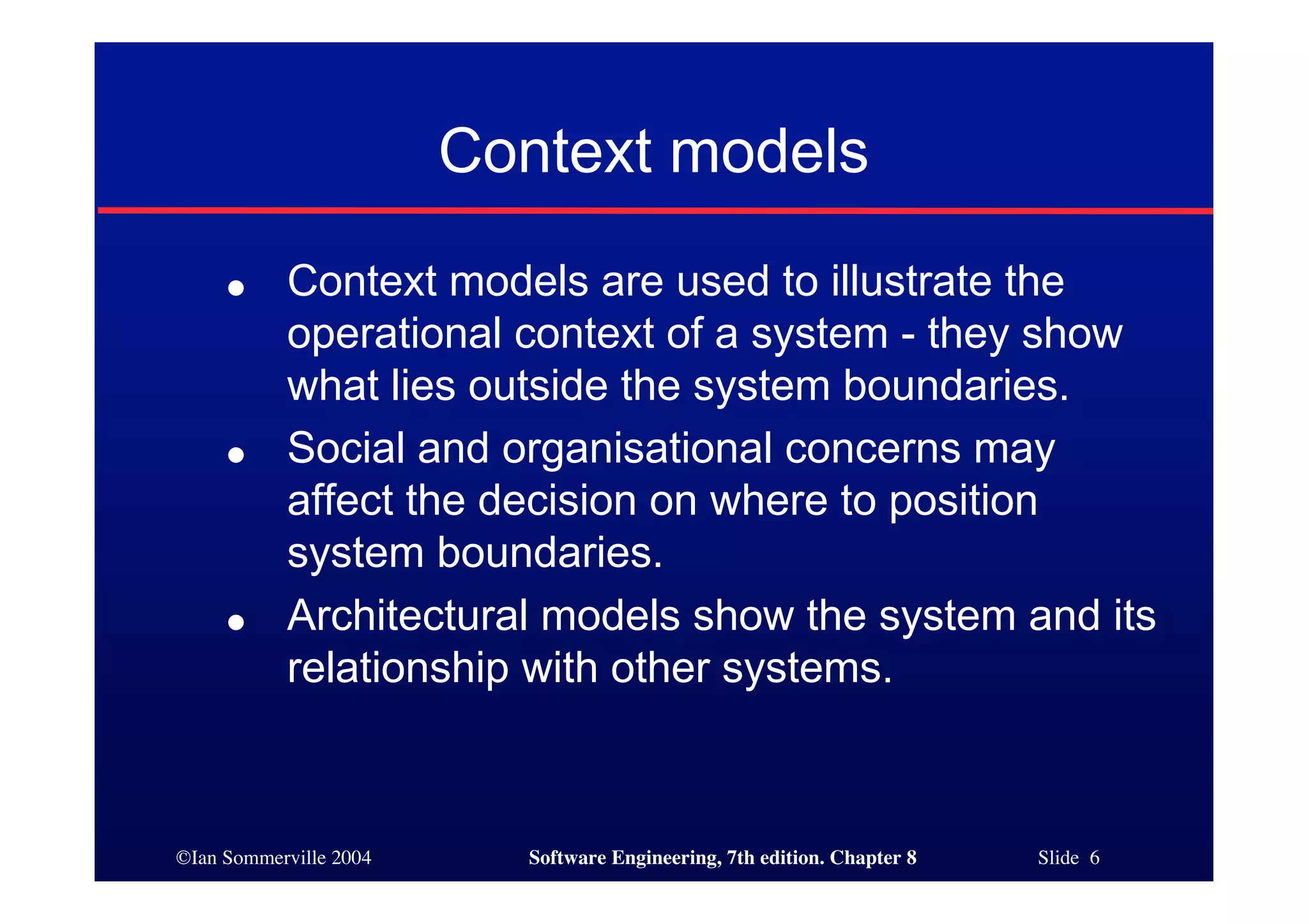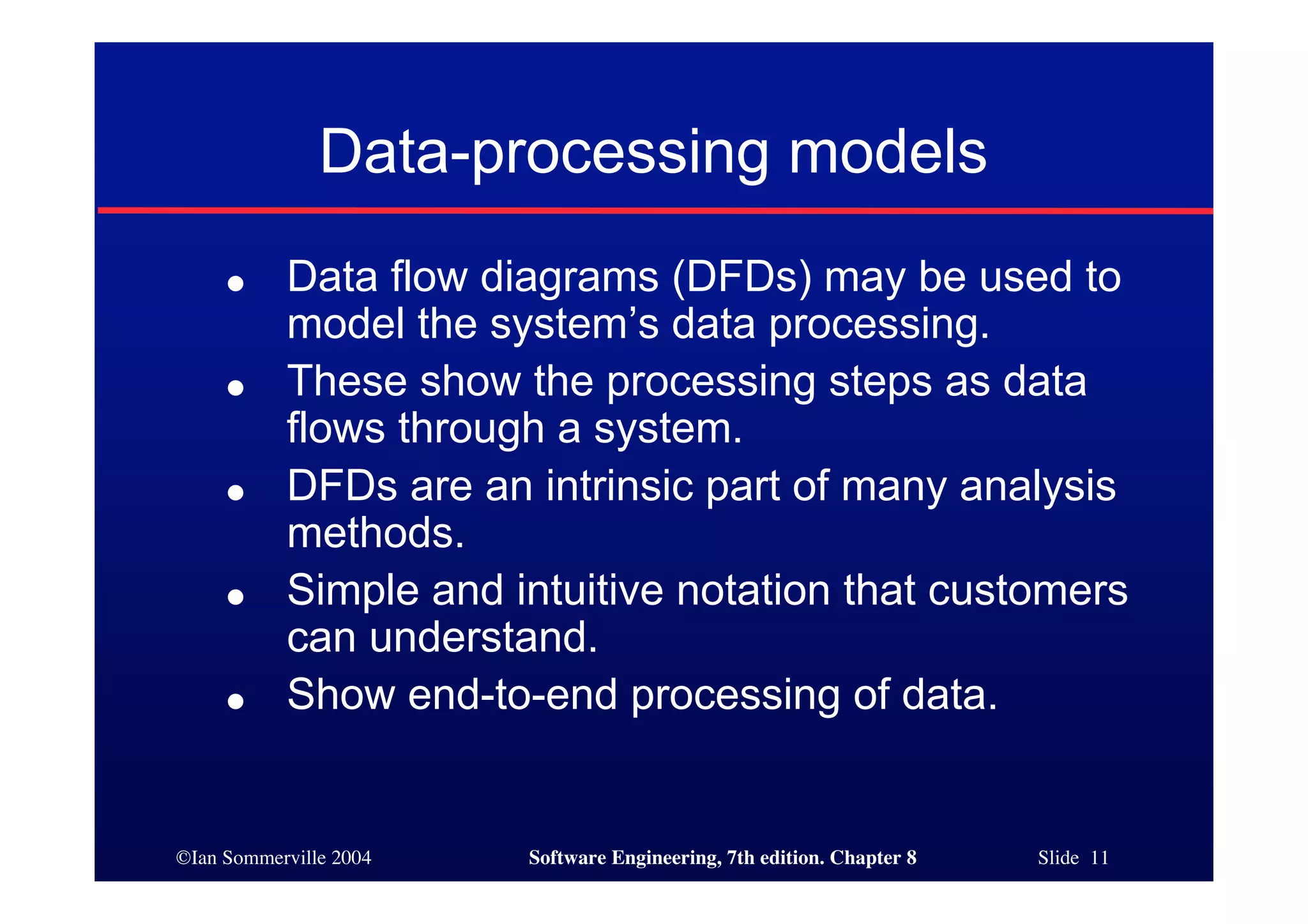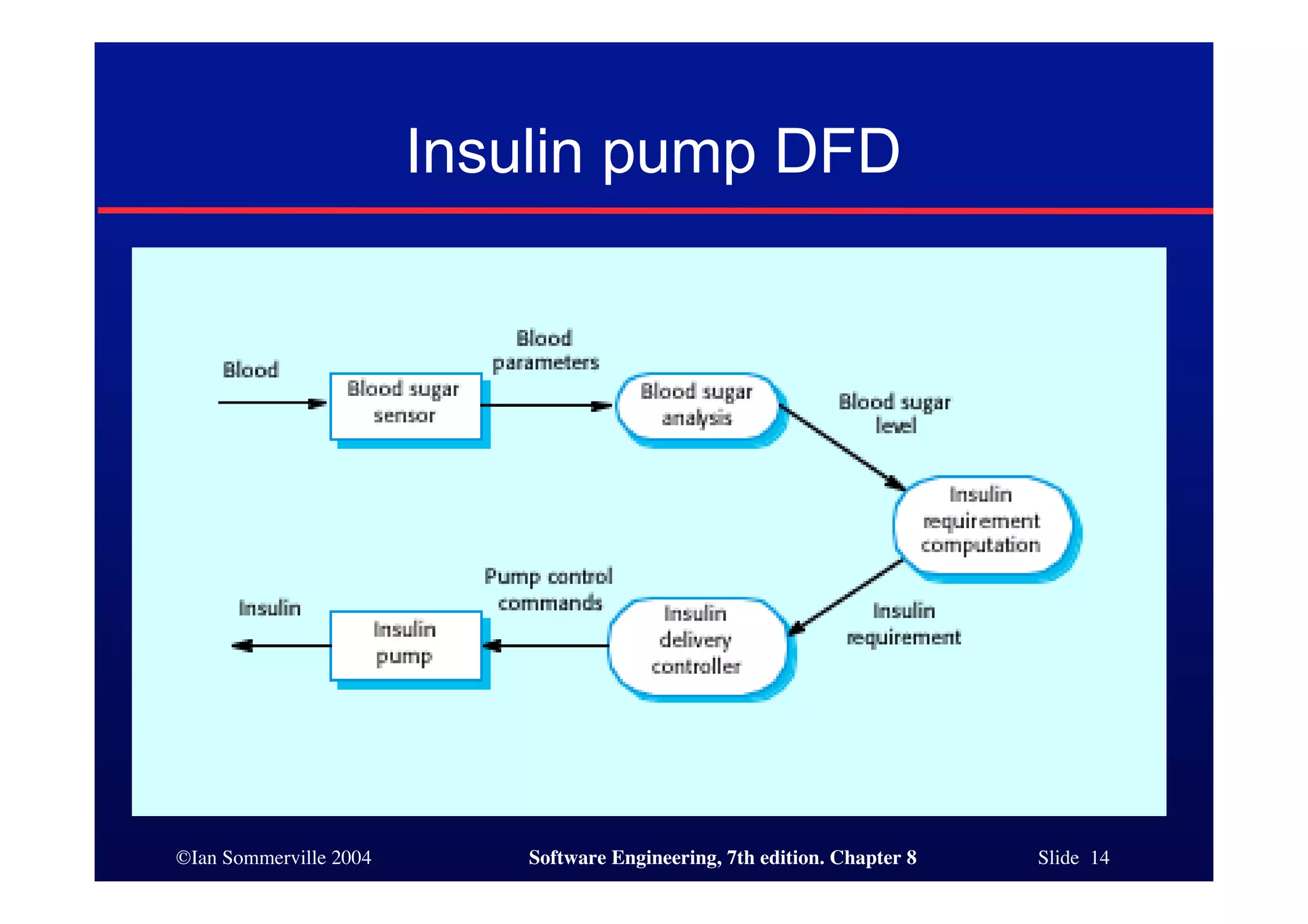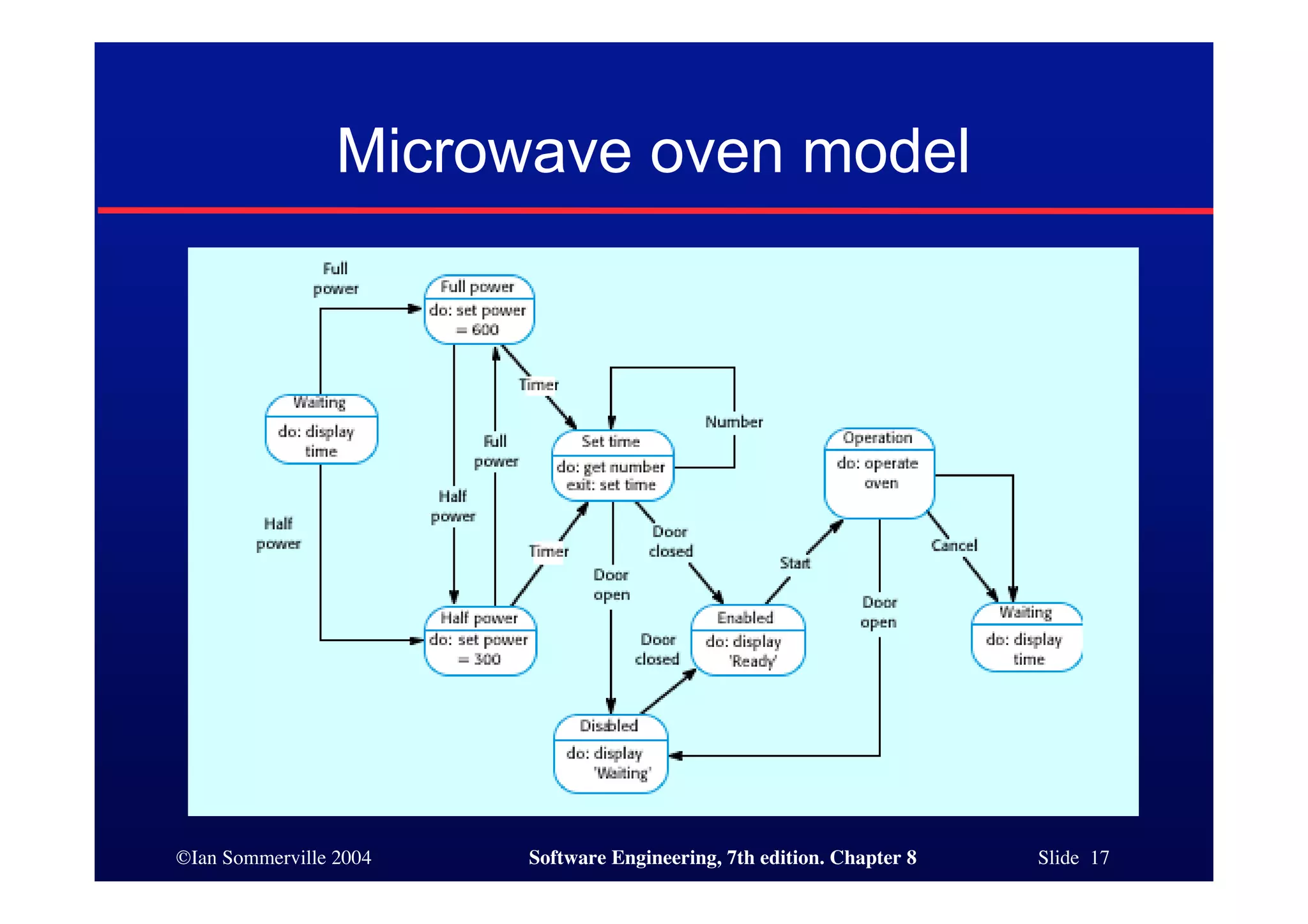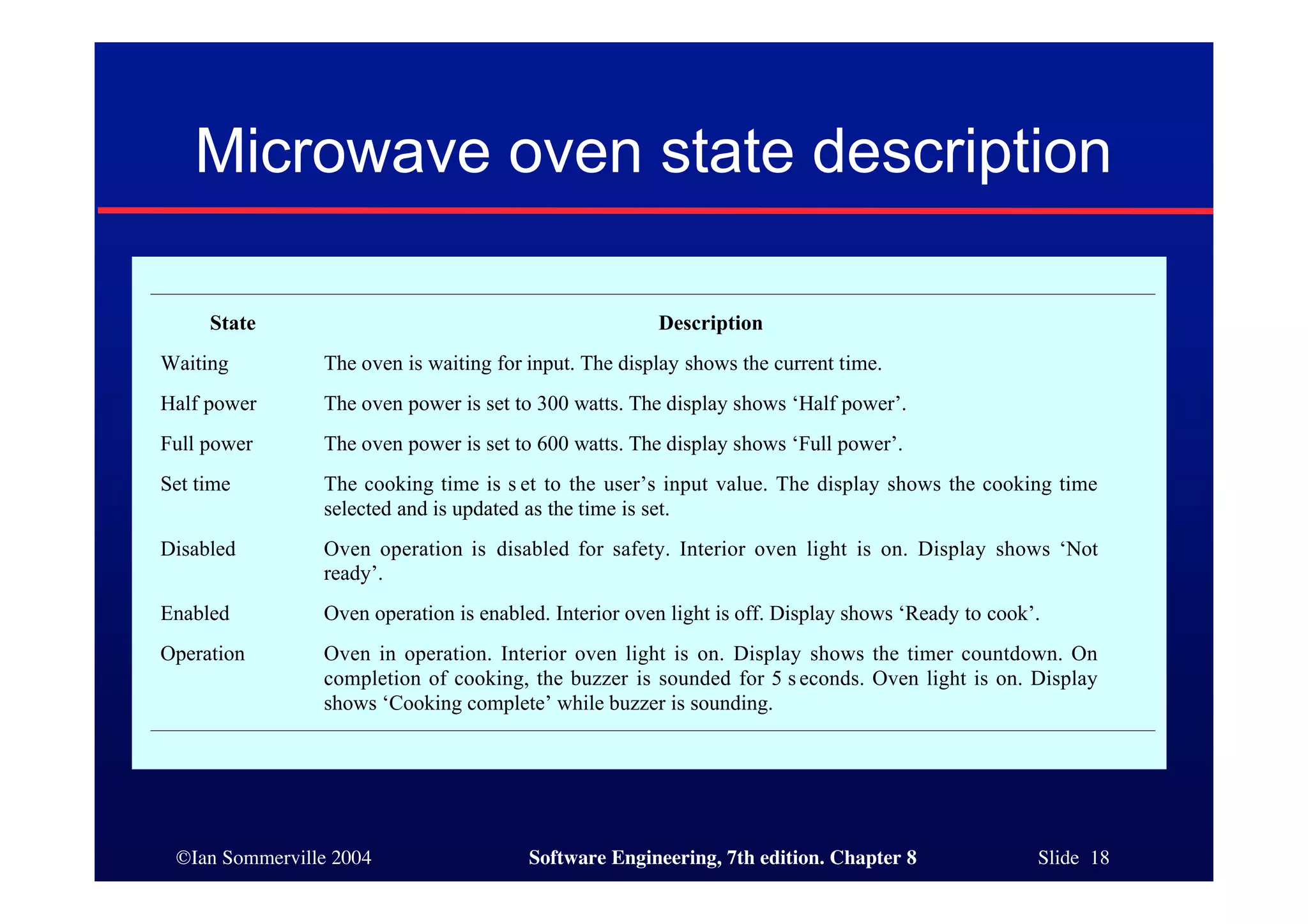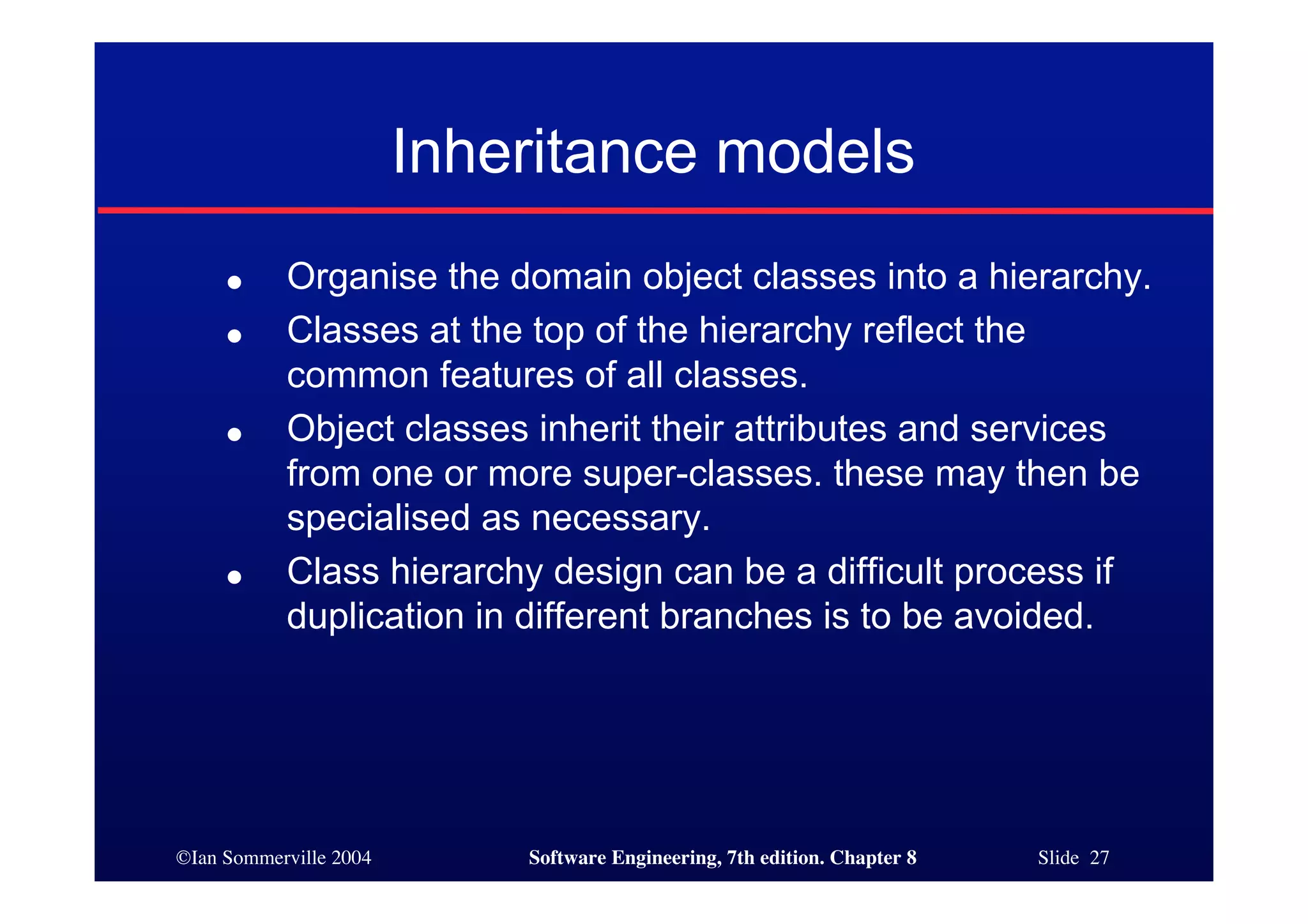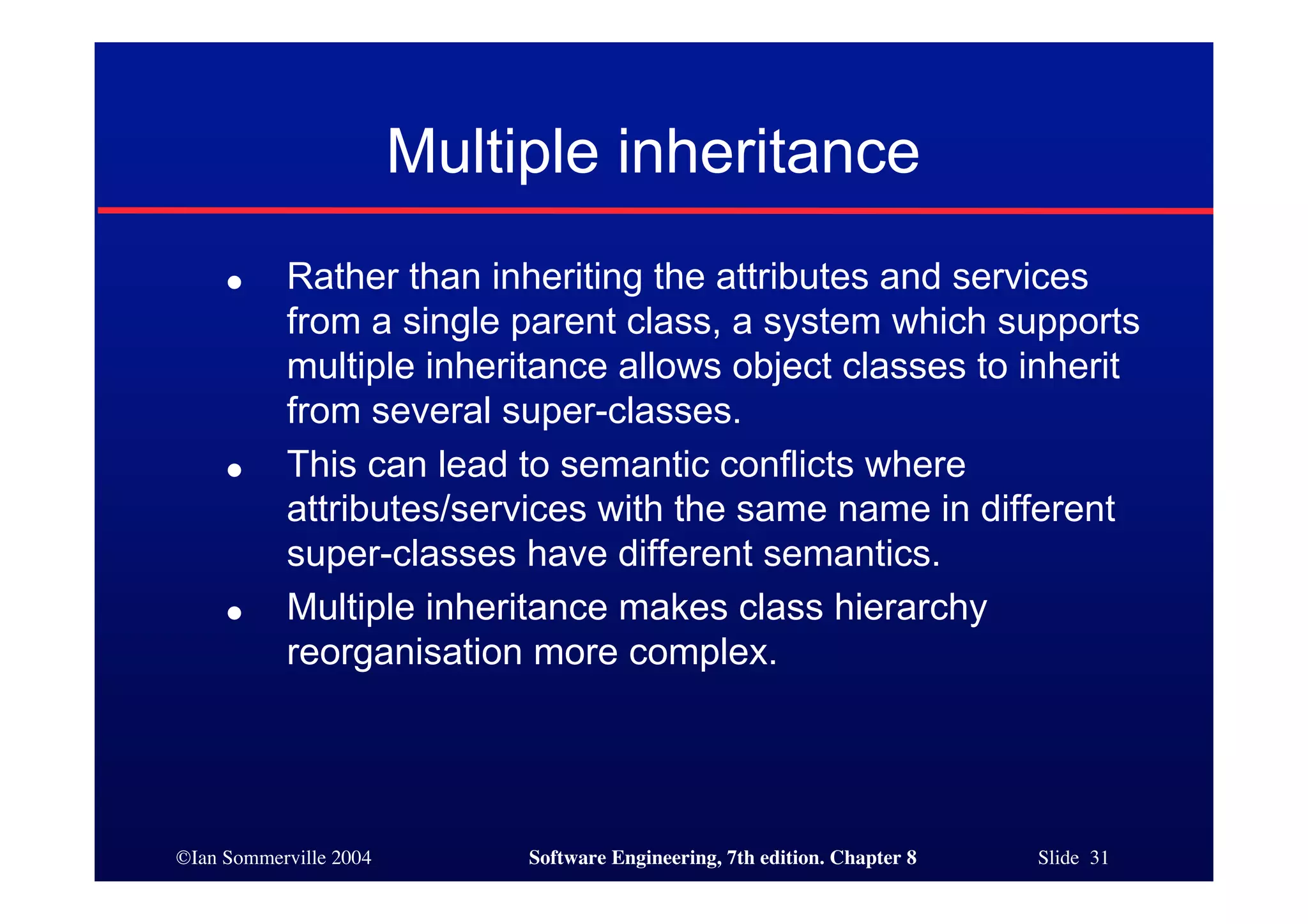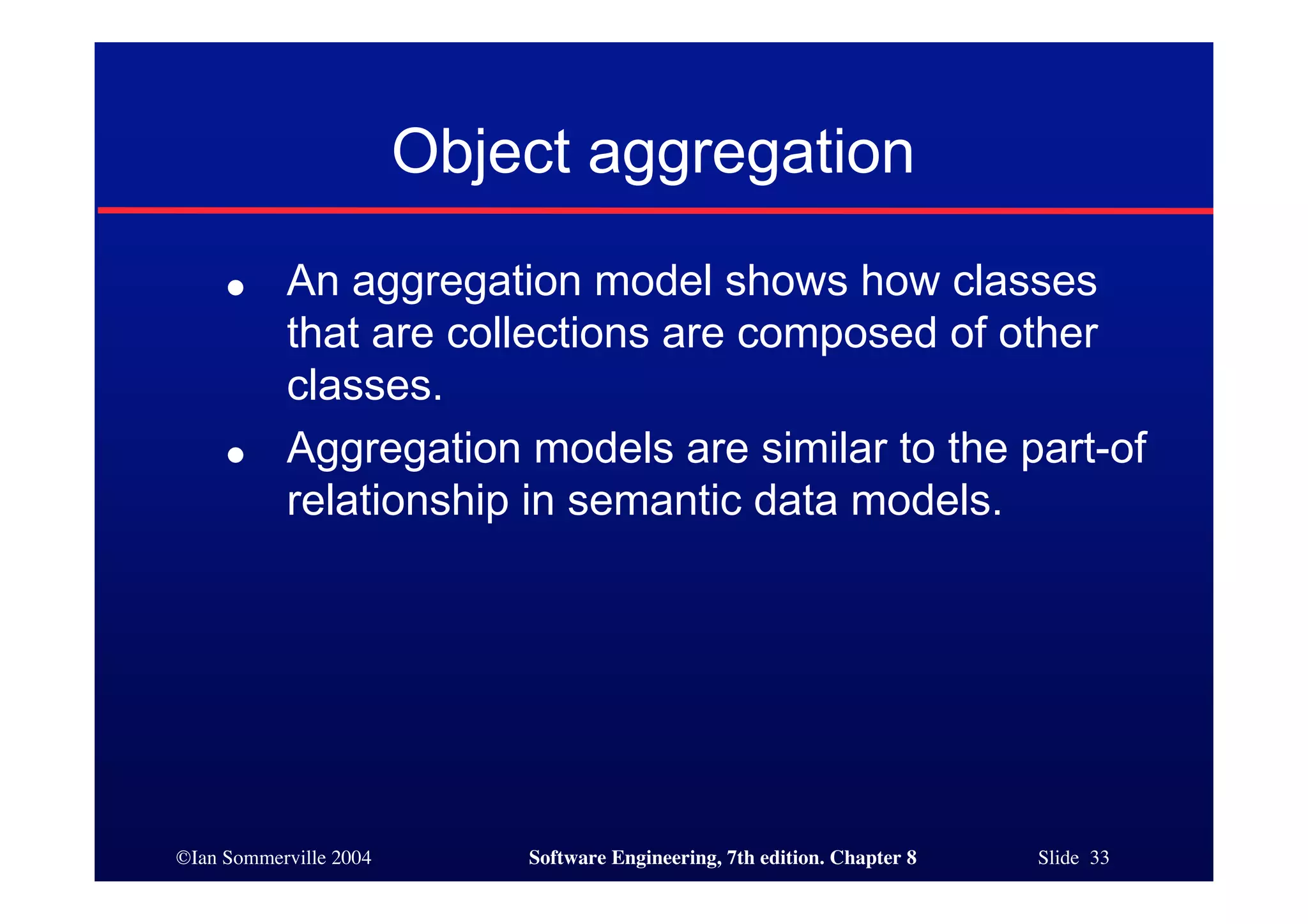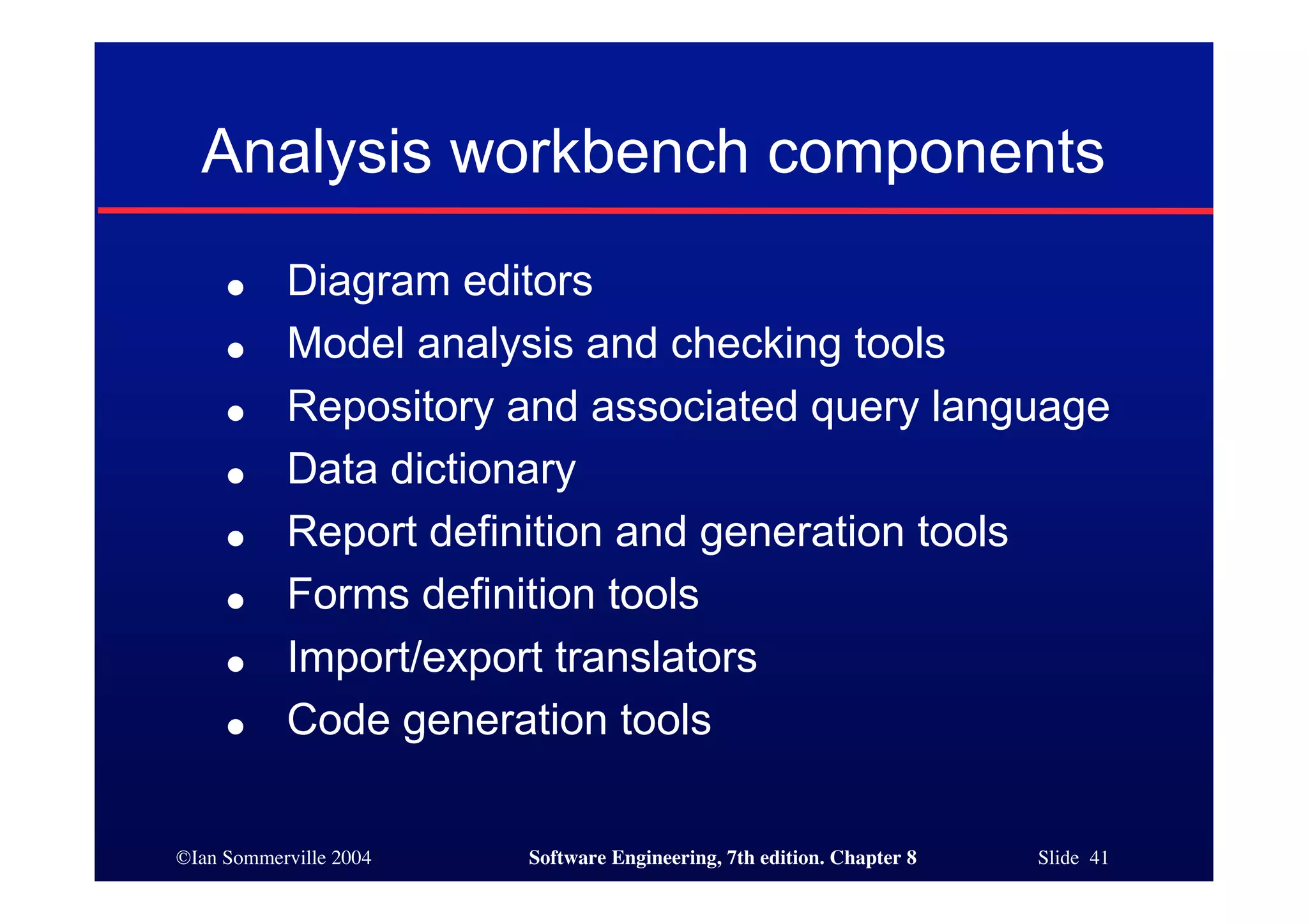The document discusses different types of system models used in requirements engineering, including context models, behavioral models, data models, and object models. It provides examples of each type of model, such as a data flow diagram of an order processing system and a state diagram for a microwave oven. The objectives are to explain why system context should be modeled, describe different modeling notations and perspectives, and discuss how computer-aided software engineering tools can support system modeling.

